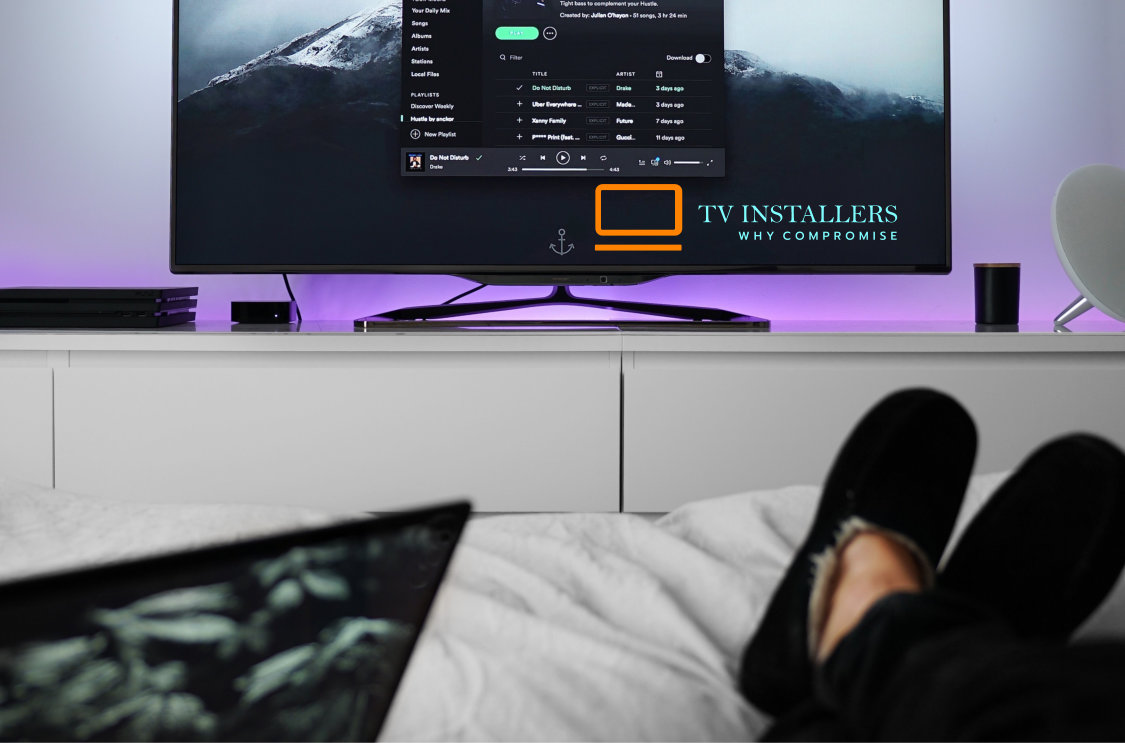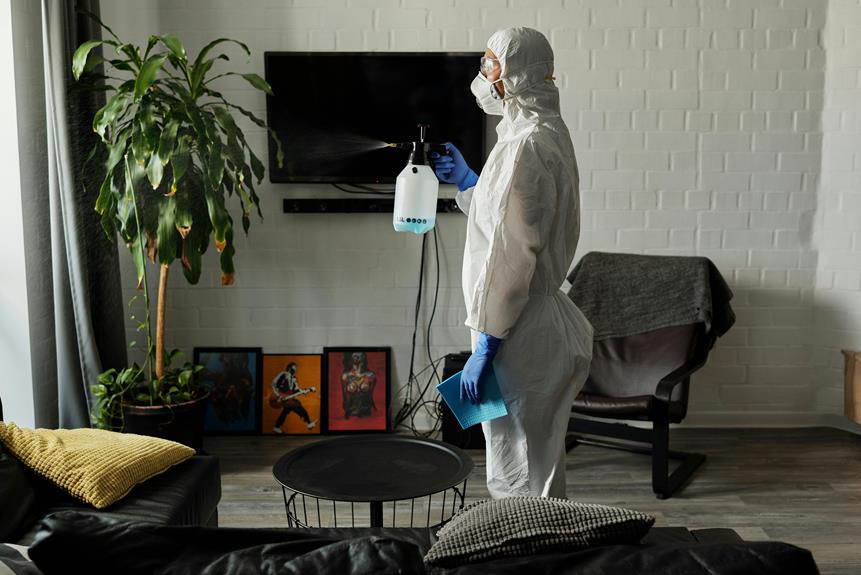So what causes TV reception problems? It often stems from several technical factors. Incorrect setup, such as tuning to the wrong transmitter or using damaged cables, can severely weaken signals.
Aging or improperly a aligned satelitte dish hampers clarity and strength, while faulty cabling leads to signal disruptions.
Geographic obstacles like hills, buildings, or even remote locations often degrade signal quality. Electromagnetic interference from appliances, power lines, and traffic creates pixelation and breakups.
Additionally, mobile phone towers can disrupt consistent signal strength.
For a deeper understanding of these issues and potential remedies, you might want to explore further.
Key Information
- Incorrect tuning to a transmitter or using damaged cables can weaken TV signals.
- Aging or improperly positioned antennas significantly degrade signal strength.
- Faulty or old cables cause interference, leading to pixelation and signal dropouts.
- Geographic features like hills and buildings obstruct signal reception.
- Electromagnetic interference from appliances and power lines disrupts TV signals.
Incorrect Set-Up
Incorrect set-up of your TV system, such as tuning to the wrong transmitter or using damaged cables, often leads to weak signals and poor reception. Confirm that your TV or set-top box is correctly tuned to the nearest and most powerful transmitter.
Inspect all cables for wear and tear; even minor frays or loose connections can degrade signal quality. Avoid unnecessary splitters or boosters, as they can introduce signal loss and interference. Properly connect each component to minimize signal degradation.
Verify that all connections are secure and free from corrosion. By meticulously setting up your TV system and maintaining high-quality connections, you can greatly enhance signal strength and reception clarity, ensuring a more reliable viewing experience.
Antenna Issues
Aging or damaged antennas frequently cause significant TV reception issues by impeding signal clarity and strength. When your antenna is timeworn or physically compromised, it can’t efficiently capture and transmit broadcast signals, leading to pixelation or complete loss of picture.
Improper positioning also plays a critical role; if your antenna isn’t correctly aligned, it won’t receive peak signal strength, further degrading reception quality.
Additionally, avoid using multiple antennas or unnecessary signal boosters, as they often create interference rather than enhancing signal reception.
Regular maintenance and inspection by a professional can help you identify and rectify these issues before they escalate, ensuring your antenna operates at peak efficiency and provides reliable TV reception.
Faulty Cabling
While guaranteeing your antenna is in top condition is essential, addressing faulty cabling is equally vital to prevent signal loss and poor picture quality.
Damaged or old cables often cause interference, disrupting the transmission of TV signals. Loose connections can lead to pixelation and signal dropouts.
Utilizing quad-shield coaxial cables can greatly reduce interference, enhancing signal quality.
Proper connection and maintenance of cables are indispensable to ensure uninterrupted TV reception.
| Issue | Cause | Solution |
|---|---|---|
| Signal Loss | Damaged/Old Cables | Replace with new cables |
| Pixelation | Loose Connections | Tighten connections |
| Interference | Inferior Cable Shielding | Use quad-shield coaxial cables |
| Signal Dropouts | Poor Cable Maintenance | Regularly inspect and maintain |
Ensuring robust cabling will markedly improve your TV viewing experience.
Geographic Factors
Understanding geographic factors is essential for diagnosing and mitigating TV reception issues. Distance from the transmitter greatly affects signal strength; the farther you are, the weaker the signal.
Terrain plays a critical role—hills, mountains, and valleys can obstruct signals, causing degradation. Urban environments with buildings and large trees can create barriers that block or reflect signals, leading to poor reception. Coastal areas face unique challenges due to water bodies causing signal diffraction.
In remote or rural areas, limited transmitter coverage can result in sparse signal availability. By analyzing local geographic features, you can strategically position your antenna to optimize signal reception and mitigate these issues effectively.
Signal Interference
Analyzing geographic factors provides a strong foundation, but recognizing and mitigating signal interference is equally essential for excellent TV reception. Interference often originates from electromagnetic waves emitted by faulty appliances, power lines, street lights, and even passing traffic. These sources disrupt your signal, leading to pixelation, breakups, and significant loss of picture quality.
To combat this, precisely identify and address interference sources. Utilize tools like spectrum analyzers to detect electromagnetic disturbances. For persistent issues, consult antenna specialists who can diagnose and resolve interference effectively.
Their expertise ensures ideal placement and configuration, mitigating interference and enhancing your viewing experience. Remember, professional intervention is often the key to maintaining uninterrupted, high-quality TV reception.
Mobile Tower Impact
Mobile phone towers can greatly disrupt your TV signal, causing sudden and unpredictable changes in reception quality. Their signals often interfere with your TV’s ability to maintain a consistent signal strength.
To address this issue, consult a local antenna installer who can analyze the specific impact of nearby mobile towers on your reception. They might recommend installing a 4G filter to mitigate the interference. You should verify if mobile towers are indeed the key factor by checking their proximity to your location.
Professional assessment and intervention are important for ensuring that mobile tower signals don’t degrade your TV viewing experience. Taking these steps will help maintain excellent TV signal quality despite the presence of mobile phone towers.
Frequently Asked Questions
Why Is My TV Reception Suddenly Bad?
Your TV reception’s suddenly bad due to possible antenna damage, loose cables, or incorrect tuning. External interference like power lines or weather conditions can also affect it. Consult a local antenna installer to diagnose and fix the issue.
What Is Interfering With My TV Signal?
You’re likely experiencing interference from old antennas, faulty cables, or nearby electrical appliances. Check connections, test appliances, and consult neighbors. Report power line issues to local authorities and faulty street lights to the council or power authority.
Why Is My TV Reception Breaking Up?
Your TV reception’s breaking up due to potential issues like electromagnetic interference, degraded antennas, or faulty cabling. Diagnosing these involves checking equipment integrity, identifying external interference sources, and possibly consulting a professional for thorough analysis and repair.
Why Does My TV Keep Pixelating and Losing Signal?
Your TV keeps pixelating and losing signal due to potential electromagnetic interference or degraded hardware. Inspect your antenna, cabling, and connections for wear. Check for nearby electrical appliances and high voltage lines causing signal disruption.
Conclusion
To optimize your TV reception, guarantee your setup is flawless. Inspect your antenna for positioning and condition, and verify cable integrity. Consider geographic influences and potential signal obstructions.
Be aware of RF interference and nearby mobile towers that could degrade signal quality. By methodically addressing these factors, you’ll enhance your viewing experience and minimize reception disruptions.
Employ industry best practices and technical precision to achieve reliable and consistent TV signal performance.



